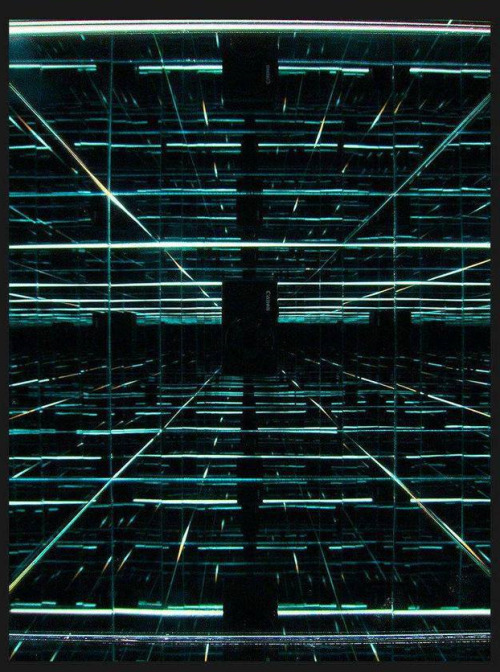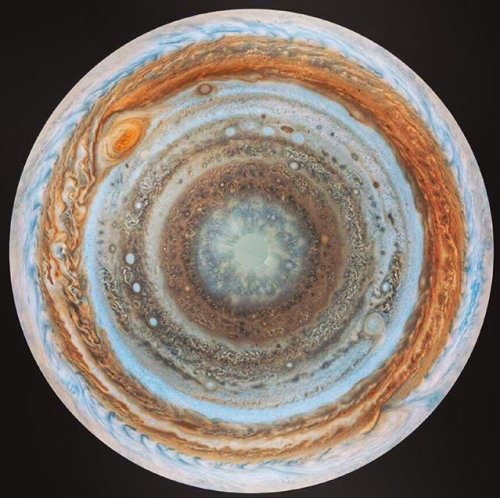How To Build A Brain







How To Build A Brain
More Posts from Science-is-magical and Others

Trees ‘talk’ by exchanging chemicals. They communicate through underground fungi, and when they can recognize their relatives, they share nutrients. Basically, tree 'families’ help each other out. Source


A fascinating new science experiment proves that we can grow babies outside of their mother’s womb
Keep reading

NASA’S TESS ROUNDS UP ITS FIRST PLANETS, SNARES FAR-FLUNG SUPERNOVAE
NASA’s Transiting Exoplanet Survey Satellite (TESS) has found three confirmed exoplanets, or worlds beyond our solar system, in its first three months of observations.
The mission’s sensitive cameras also captured 100 short-lived changes – most of them likely stellar outbursts – in the same region of the sky. They include six supernova explosions whose brightening light was recorded by TESS even before the outbursts were discovered by ground-based telescopes.
The new discoveries show that TESS is delivering on its goal of discovering planets around nearby bright stars. Using ground-based telescopes, astronomers are now conducting follow-up observations on more than 280 TESS exoplanet candidates.
The first confirmed discovery is a world called Pi Mensae c about twice Earth’s size. Every six days, the new planet orbits the star Pi Mensae, located about 60 light-years away and visible to the unaided eye in the southern constellation Mensa. The bright star Pi Mensae is similar to the Sun in mass and size.
“This star was already known to host a planet, called Pi Mensae b, which is about 10 times the mass of Jupiter and follows a long and very eccentric orbit,” said Chelsea Huang, a Juan Carlos Torres Fellow at the Massachusetts Institute of Technology’s (MIT) Kavli Institute for Astrophysics and Space Research (MKI) in Cambridge. “In contrast, the new planet, called Pi Mensae c, has a circular orbit close to the star, and these orbital differences will prove key to understanding how this unusual system formed.”
Next is LHS 3884b, a rocky planet about 1.3 times Earth’s size located about 49 light-years away in the constellation Indus, making it among the closest transiting exoplanets known. The star is a cool M-type dwarf star about one-fifth the size of our Sun. Completing an orbit every 11 hours, the planet lies so close to its star that some of its rocky surface on the daytime side may form pools of molten lava.
The third – and possibly fourth – planets orbit HD 21749, a K-type star about 80 percent the Sun’s mass and located 53 light-years away in the southern constellation Reticulum.
The confirmed planet, HD 21749b, is about three times Earth’s size and 23 times its mass, orbits every 36 days, and has a surface temperature around 300 degrees Fahrenheit (150 degrees Celsius). “This planet has a greater density than Neptune, but it isn’t rocky. It could be a water planet or have some other type of substantial atmosphere,” explained Diana Dragomir, a Hubble Fellow at MKI and lead author of a paper describing the find. It is the longest-period transiting planet within 100 light-years of the solar system, and it has the coolest surface temperature of a transiting exoplanet around a star brighter than 10th magnitude, or about 25 times fainter than the limit of unaided human vision.
What’s even more exciting are hints the system holds a second candidate planet about the size of Earth that orbits the star every eight days. If confirmed, it could be the smallest TESS planet to date.
TESS’s four cameras, designed and built by MKI and MIT’s Lincoln Laboratory in Lexington, Massachusetts, spend nearly a month monitoring each observing sector, a single swath of the sky measuring 24 by 96 degrees. The primary aim is to look for exoplanet transits, which occur when a planet passes in front of its host star as viewed from TESS’s perspective. This causes a regular dip in the measured brightness of the star that signals a planet’s presence.
In its primary two-year mission, TESS will observe nearly the whole sky, providing a rich catalog of worlds around nearby stars. Their proximity to Earth will enable detailed characterization of the planets through follow-up observations from space- and ground-based telescopes.
But in its month-long stare into each sector, TESS records many additional phenomena, including comets, asteroids, flare stars, eclipsing binaries, white dwarf stars and supernovae, resulting in an astronomical treasure trove.
In the first TESS sector alone, observed between July 25 and Aug. 22, 2018, the mission caught dozens of short-lived, or transient, events, including images of six supernovae in distant galaxies that were later seen by ground-based telescopes.
“Some of the most interesting science occurs in the early days of a supernova, which has been very difficult to observe before TESS,” said Michael Fausnaugh, a TESS researcher at MKI. “NASA’s Kepler space telescope caught five of these events as they brightened during its first four years of operations. TESS found as many in its first month.”
These early observations hold the key to understanding a class of supernovae that serve as an important yardstick for cosmological studies. Type Ia supernovae form through two channels. One involves the merger of two orbiting white dwarfs, compact remnants of stars like the Sun. The other occurs in systems where a white dwarf draws gas from a normal star, gradually gaining mass until it becomes unstable and explodes. Astronomers don’t know which scenario is more common, but TESS could detect modifications to the early light of the explosion caused by the presence of a stellar companion.
All science data from the first two TESS observation sectors were recently released to the scientific community through the Mikulski Archive for Space Telescopes (MAST) at the Space Telescope Science Institute in Baltimore.
More than a million TESS images were downloaded from MAST in the first few days,” said Thomas Barclay, a TESS researcher at NASA’s Goddard Space Flight Center in Greenbelt, Maryland, and the University of Maryland, Baltimore County. “The astronomical community’s reaction to the early data release showed us that the world is ready to jump in and add to the mission’s scientific bounty.
George Ricker, the mission’s principal investigator at MKI, said that TESS’s cameras and spacecraft were performing superbly. “We’re only halfway through TESS’s first year of operations, and the data floodgates are just beginning to open,” he said. “When the full set of observations of more than 300 million stars and galaxies collected in the two-year prime mission are scrutinized by astronomers worldwide, TESS may well have discovered as many as 10,000 planets, in addition to hundreds of supernovae and other explosive stellar and extragalactic transients.”


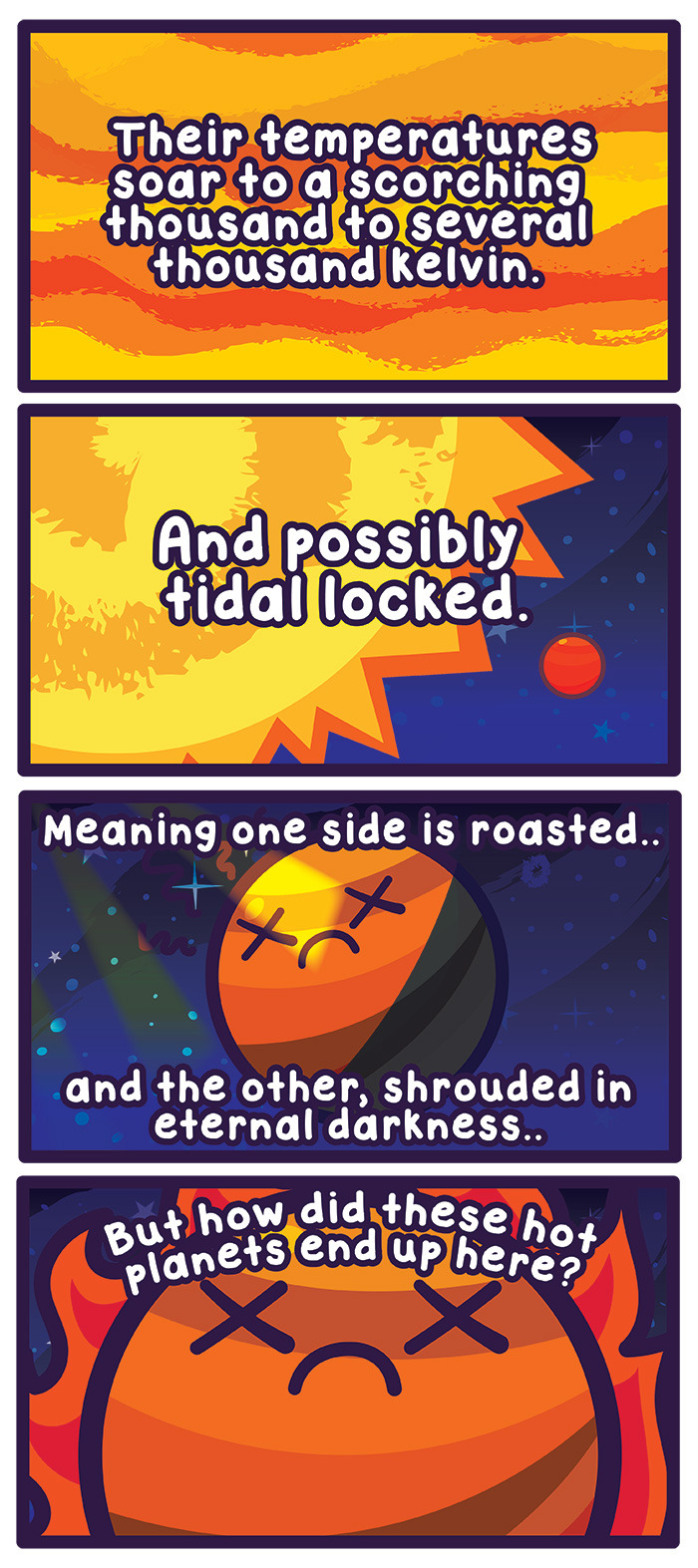

Better late than never!
This week’s entry: Hot Jupiters
http://www.space.com/32011-extremely-hot-and-fast-planets-seem-to-defy-logic.html
https://astrobites.org/2015/03/04/hot-jupiters-are-very-bad-neighbors/
Here are 17 jaw-dropping photos of space that show us just how small we really are:
This photo of the moon and Earth taken from the International Space Station.

A dwarf galaxy, about 11 million light-years away from us.

Earth as seen from the moon in 1968.

A cluster of stars, 20,000 light-years away from Earth.

The first flower grown in the International Space Station, photographed by astronaut Scott Kelly.

Saturn, seen through an infared filter.

These visible “loops” on the surface of the sun can reach up to 15 times the diameter of Earth in height.

The Northen Lights just North of Chicago, viewed from the International Space Station.

The Quintuplet Cluster, located 100 light-years from the center of our galaxy.

Pluto and one of its moons, Charon.

The Great Pyramids of Giza, seen from space.

Astronaut Bruce McCandless maneuvering, untethered, above Earth in 1984.

Galaxy NGC 6240, 400 million light-years away from Earth.

Palomar 12, a cluster of stars on the outskirts of the Milky Way.

The remnants of an exploded star.

New York City, seen from the International Space Station.

And the remains of a supernova whose explosion may have been seen almost 2,000 years ago by Chinese astronomers.
Follow @the-future-now

Have you ever seen a Lybia crab? Often called boxer crabs, or pom-pom crabs, these tiny crustaceans are easily identified by a unique behavior: they hold anemones on their claws to defend themselves from predators, keeping the anemones small enough to wield by limiting their food intake. But how do they get the anemones in the first place? Researchers think they have an answer: by stealing one from another crab, and then splitting it in half to create two identical clones—one for each claw.
Two graduate students, Yisrael Schnytzer and Yaniv Giman, set out to discover how the Lybia crabs acquire their anemones. They spent years observing and collecting crabs (Lybia leptochelis, specifically) from the Red Sea. Given that Lybia crabs are exceptionally well-camouflaged and only a few centimeters across, this was no easy task, but they managed to observe or collect more than 100 individuals.
Every specimen Schnytzer and Giman found was in possession of a pair of anemones, and each anemone belonged to the genus Alicia. Interestingly, the anemones themselves were not found living by themselves; they were only found already living on the claws of Lybia crabs. The researchers decided to study some of the crabs in a laboratory, to see if more observation would solve the mystery of how they acquired their anemones to begin with.
In the lab, the researchers conducted several experiments, the first of which was to take one anemone away from a crab. When left with just one anemone, the crab solved the problem by splitting the remaining anemone into two. The two halves of the anemone would then regenerate into two identical clones, one for each claw, over the course of several days.
The second experiment involved removing both anemones from one crab and placing it in a tank with a crab that still had both its anemones. The result: the two crabs would fight, with the anemone-less crab usually succeeding in stealing one anemone from the other crab. These fights did not tend to result in injuries to the crabs themselves, and once each crab was in possession of one anemone, both crabs would split their anemone into halves to create a pair of clones.
In addition to these experiments, Schnytzer and Giman examined the genes of the anemones found on the wild crabs. Every crab collected from the wild was holding a pair of identical clones. This might mean that anemone theft is rampant among Lybia crabs in the Red Sea, and that it might be the main way that these crabs acquire their anemones.
At any rate, it is clear that the crabs are frequently splitting anemones in two, inducing asexual reproduction in another species and potentially limiting that species’ genetic diversity in the process—a rarity outside the human world.
Based on materials provided by PeerJ and ScienceDaily
Journal reference: Yisrael Schnytzer, Yaniv Giman, Ilan Karplus, Yair Achituv. Boxer crabs induce asexual reproduction of their associated sea anemones by splitting and intraspecific theft. PeerJ, 2017; 5: e2954 DOI: 10.7717/peerj.2954
Image credit: Yisrael Schnytzer
Submitted by volk-morya
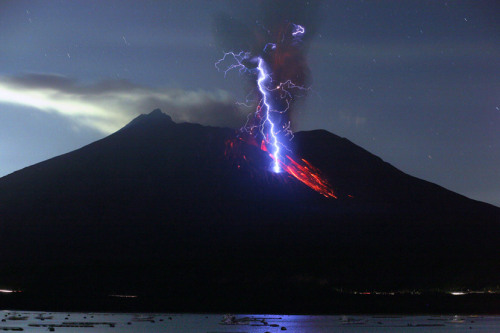
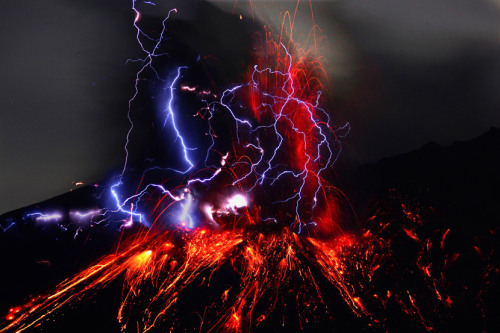
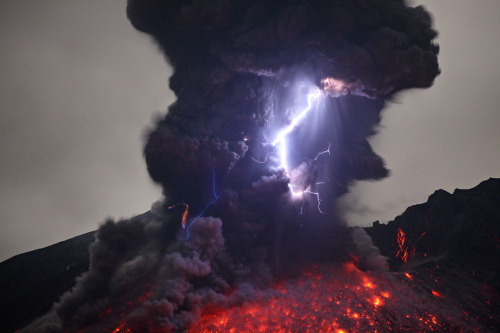
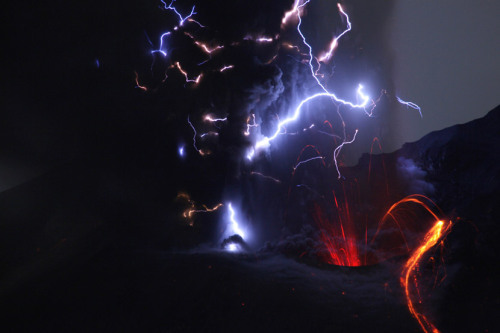
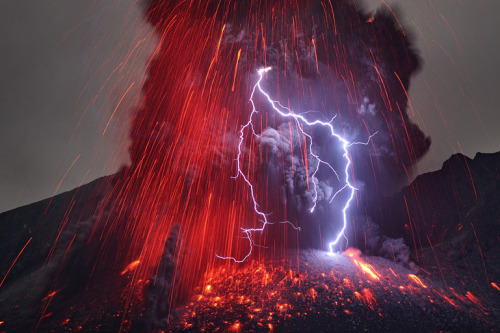
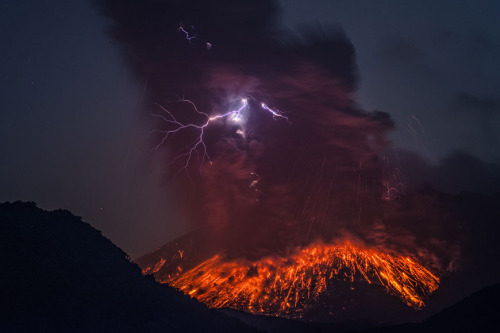
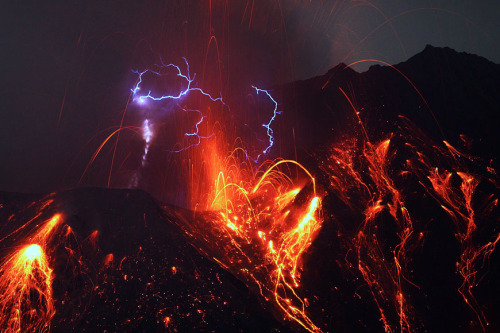
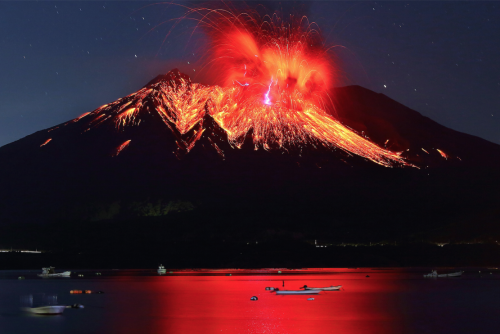
photos of sakurajima, the most active volcano in japan, by takehito miyatake and martin rietze. volcanic storms can rival the intensity of massive supercell thunderstorms, but the source of the charge responsible for this phenomenon remains hotly debated.
in the kind of storm clouds that generate conventional lightning, ice particles and soft hail collide, building up positive and negative charges, respectively. they separate into layers, and the charge builds up until the electric field is high enough to trigger lightning.
but the specific mechanism by which particles of differing charges are separated in the ash cloud is still unknown. lightning has been observed between the eruption plume and the volcano right at the start of an eruption, suggesting that there are processes that occur inside the volcano to lead to charge separation.
volcanic lightning could yield clues about the earth’s geological past, and could answer questions about the beginning of life on our planet. volcanic lightning could have been the essential spark that converted water, hydrogen, ammonia, and methane molecules present on a primeval earth into amino acids, the building blocks of life.
-
 shadow-king-club liked this · 1 week ago
shadow-king-club liked this · 1 week ago -
 reddammancy reblogged this · 3 months ago
reddammancy reblogged this · 3 months ago -
 reddammancy liked this · 3 months ago
reddammancy liked this · 3 months ago -
 awstens-vagina liked this · 6 months ago
awstens-vagina liked this · 6 months ago -
 gfejr7 liked this · 6 months ago
gfejr7 liked this · 6 months ago -
 waynechef72 reblogged this · 7 months ago
waynechef72 reblogged this · 7 months ago -
 waynechef72 liked this · 7 months ago
waynechef72 liked this · 7 months ago -
 sweetbutantisocial liked this · 9 months ago
sweetbutantisocial liked this · 9 months ago -
 hjlphotos liked this · 10 months ago
hjlphotos liked this · 10 months ago -
 tsundere-sunshine liked this · 1 year ago
tsundere-sunshine liked this · 1 year ago -
 scydiahs liked this · 1 year ago
scydiahs liked this · 1 year ago -
 raisingarevolution liked this · 1 year ago
raisingarevolution liked this · 1 year ago -
 rithathi1 liked this · 1 year ago
rithathi1 liked this · 1 year ago -
 deathelegy liked this · 1 year ago
deathelegy liked this · 1 year ago -
 as-bad-as-the-hell liked this · 1 year ago
as-bad-as-the-hell liked this · 1 year ago -
 ralpache reblogged this · 1 year ago
ralpache reblogged this · 1 year ago -
 ralpache liked this · 1 year ago
ralpache liked this · 1 year ago -
 tranbettdolital liked this · 1 year ago
tranbettdolital liked this · 1 year ago -
 solidifiedsunshine reblogged this · 1 year ago
solidifiedsunshine reblogged this · 1 year ago -
 crazyturtletree liked this · 2 years ago
crazyturtletree liked this · 2 years ago -
 x3natiive liked this · 2 years ago
x3natiive liked this · 2 years ago -
 baphomwet reblogged this · 2 years ago
baphomwet reblogged this · 2 years ago -
 baphomwet liked this · 2 years ago
baphomwet liked this · 2 years ago -
 medic-from-team-defense-fort-2 reblogged this · 2 years ago
medic-from-team-defense-fort-2 reblogged this · 2 years ago -
 medic-from-team-defense-fort-2 liked this · 2 years ago
medic-from-team-defense-fort-2 liked this · 2 years ago -
 gatheringlostconstellations liked this · 2 years ago
gatheringlostconstellations liked this · 2 years ago -
 parmars-world liked this · 2 years ago
parmars-world liked this · 2 years ago -
 eskimokissesh liked this · 2 years ago
eskimokissesh liked this · 2 years ago -
 tmedic liked this · 2 years ago
tmedic liked this · 2 years ago -
 gusepeh15 liked this · 2 years ago
gusepeh15 liked this · 2 years ago -
 officialyobsessedwithmoony liked this · 2 years ago
officialyobsessedwithmoony liked this · 2 years ago



